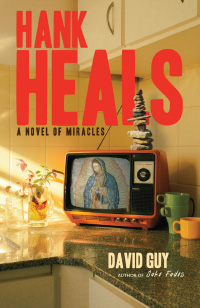A Charmed Life a novel by Mary McCarthy. From Mary McCarthy Novels and Stories 1942-1963. Thomas Mallon editor. Library of America. pp. 509-759. ****
When I got Miranday July’s novel All Fours for Christmas—at my request—it occurred to me that I might compare this generation’s notorious female with the corresponding woman from my mother’s generation, Mary McCarthy (1912-1989). I was up to the fourth novel in my reading of McCarthy, and A Charmed Life happens to concern midlife infidelity, like July’s.
I actually loved A Charmed Life and thought it in many ways the best of McCarthy’s first four novels, until the last paragraph. I won’t say that ruined the whole book, but it came close. Why an experienced writer would choose an ending like that, after all the work of producing a novel, is beyond me.
But the milieu here is right in McCarthy’s wheelhouse, an artist colony in New York state by the name of New Leeds, because she is first and foremost a satirist (and showed us that when she tore apart a utopian community in The Oasis). There are a few genuine artists in New Leeds, and our protagonist, Martha Sinnott—who has come there to work on a play, and also in the hope of starting a family with her second husband, John Sinott—is one of them; she’s a dramatist and a woman of the theater. Another serious artist, though we don’t notice at first, is a man named Warren Coe; he and his wife Jane are well-connected in the community, and are helping the Sinnotts settle in. Coe paints with the dedication of an established artist but doesn’t exhibit his work. A third is a scholar/writer by the name of Miles Murphy, but he is problematic for Jane, because he was her first husband, and they had a tumultuous relationship, which included Jane’s sudden exit in the middle of the night, the conflagration of a house that burned it to the ground, and the death of Miles’ child from an earlier marriage (after she had left). Miles’ presence in New Leeds is an argument for her not to return at all, and she avoids him early in her stay, but eventually realizes she can’t do that forever.
Miles is rather obviously based on Edmund Wilson, one of the intellectual heroes of my youth (he was a frequent reviewer for the New Yorker in those days), and he comes across as a brilliant man, hugely learned, but also an intellectual bully and an overbearing conversationalist who absolutely must hold center stage. Why he would choose to live in New Leeds is beyond me. He won’t find his intellectual equal there. He does like social events and is a big drinker, an activity that is central to New Leeds. For most of the artists in the colony, it is the major pastime, other than sleeping around and getting married yet again. Pretentious artists need pretenders surrounding them. There is no shortage of such people in New Leeds.
There is a wonderful interim passage in this novel in which a young woman artist named Dolly Lamb encounters one of the colony’s leading freeloaders, a guy named Sandy Gray who has a naturalist and also a bohemian air, has no manners whatsoever, starts bullying her and telling her what to do, and in general infiltrates her life, to the point where I couldn’t believe she would let him do it. He’s the kind of guy who nowadays would set up as a Life Coach (who the hell needs to be coached about life?). She later speaks for him in a custody battle with his fourth wife (spoiler alert: he loses), after which he goes back home, gets drunk, and finally gets down—it seems—to having sex with Dolly (except that he’s impotent. Naturally). This man embodies everything that is goofy and phony about New Leeds, and in that way is important to the satire. But in terms of our protagonist and her narrative, the passage doesn’t belong in the novel at all. I kept thinking, what’s this doing here?
I don’t know that I’ve ever read a novel which so much of the plot revolves around a single sexual act, between Martha and—as I’m sure you’ve guessed by now—her ex. They go together to a play-reading that the group is doing together, with Miles holding forth as usual about the historical background and various interpretations. Afterwards he had Martha are thrown together, or at least drift together; for once, he seems mildly charming (his wife is elsewhere, as is her husband), and we can almost see why Martha married him. We also see the seduction coming a mile away, especially because the booze is flowing. He agrees to take her home, and people at the party—especially Warren Coe—see what’s coming too. She invites him in for a drink (yeah, right), and the event happens.
It is an act which a woman in the 21st century would call a rape. Mary McCarthy’s generation didn’t call it that, and I don’t think mine would have either. Martha had let Miles kiss her and begin fooling around, but she resisted the actual act for quite a while, while Miles was—even I would say this—forcing himself on her. That was all part of foreplay in those day; the woman resisted a little to prove she was a good girl. There was a sex scene very much like this one in McCarthy’s first novel. In this case, Martha really didn’t want to, but she finally gave in because it seemed less trouble than resisting. She doesn’t enjoy the act, and by that time Miles probably didn’t either. It all seems perfunctory and depressing.
That, naturally, is the month when Martha gets pregnant, and she spends the rest of the novel trying to decide what to do. She doesn’t have anyone to talk to or confide it; the community is terrifically gossipy, and the whole place would know immediately. She doesn’t even know the local doctor (and in the mid-forties, there’s no telling how sympathetic he’ll be). Abortion is illegal, of course, but (as Diane Di Prima showed us) it’s also rather common. There’s a moment when Martha actually argues to herself that abortion to be the more moral alternative; there’s a switch, I thought to myself. She’s afraid that the baby will come out looking like Warren, or have his red hair, which would be a dead giveaway. She’s also haunted by the idea that she might never know whose child it is. That bothers her more than anything else.
I found this a fascinating moral dilemma, one well worth basing a novel on. What bothered me was the way it resolved itself. I won’t reveal that, but if you’re thinking of reading this novel—I can’t remember ever saying this before—I’d read the last paragraph first. You won’t be let down at the end. And you can enjoy one of McCarthy’s most biting satires.
 Available Now →
Available Now →Recent Evening Mind Posts
Swan SongA Star Is Not BornThe Man HimselfTwo Loose CannonsAspiration Meets RealityDogen for the MassesWeird From the Get GoTwo MasterpiecesMary, Erica, MirandaUntil the EndUnfinished LivesAmerican OriginalLosing ItKeep an Eye on IgorAnd Is He PissedLooks Pretty Good to MeShe Wasn’t Crazy. The World Was.Elmore the GreatWriting Like GodWriting Like God
View Other Essays by Topic
agingAmerican literatureartBuddhismChristianitycreative processdeath and dyingmeditationmoviesmusicracereligionsexspiritualitythe art of narrativeUncategorizedworld literature

